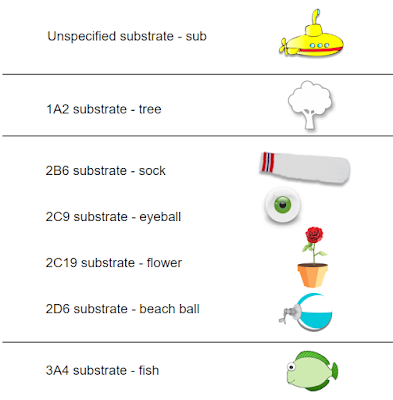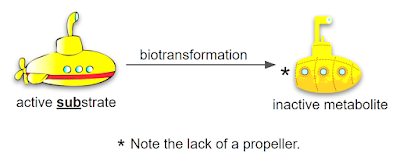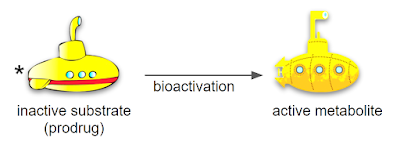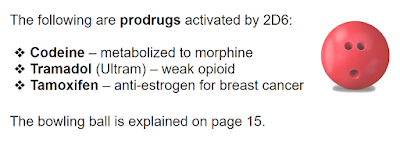Substrates in drug-drug interactions
Excerpt from Cafer's Psychopharmacology, available soon from Amazon
SUBSTRATES
A drug that is biotransformed by a particular enzyme is referred to as a substrate of that enzyme. When the substrate is biotransformed (metabolized) it is then referred to as a metabolite.
Each CYP enzyme can metabolize several substrates and most substrates can be metabolized by several CYP enzymes. Substrates are the “victims” of the interactions described in this chapter. Throughout this book we use the following visuals for CYP substrates:
“Aggressor” medications affect how long victim substrates linger in the blood, and the relative serum concentration of parent drug (substrate) to metabolite. For a given enzyme, interfering medications (aggressors) are either inDucers or inHibitors. InDucers stimulate (inDuce) production of metabolic enzymes. InHibitors interfere with an enzyme’s ability to metabolize other medications.
PRODRUGS
Phase I metabolism typically involves biotransformation of an active drug to an inactive (or less active) chemical.
For a few medications, the parent drug has low therapeutic activity until it is biotransformed by a CYP enzyme. In such cases, the substrate is called a prodrug, and the biotransformation process can be referred to as bioactivation.
For most medications (active parent drug to inactive metabolite) inDuction decreases (D for Down) effect of the drug and inHibition (H for High) amplifies the therapeutic effect and/or side effects.
With prodrugs, the opposite effect is observed clinically. Induction increases and inhibition decreases the medication’s effect(s).
Don’t let prodrugs confuse you. InHibitors increase and InDucers decrease the levels of substrate regardless of whether the parent drug is pharmacologically active.
Copyright 2020 CaferMed LLC








Comments
Post a Comment